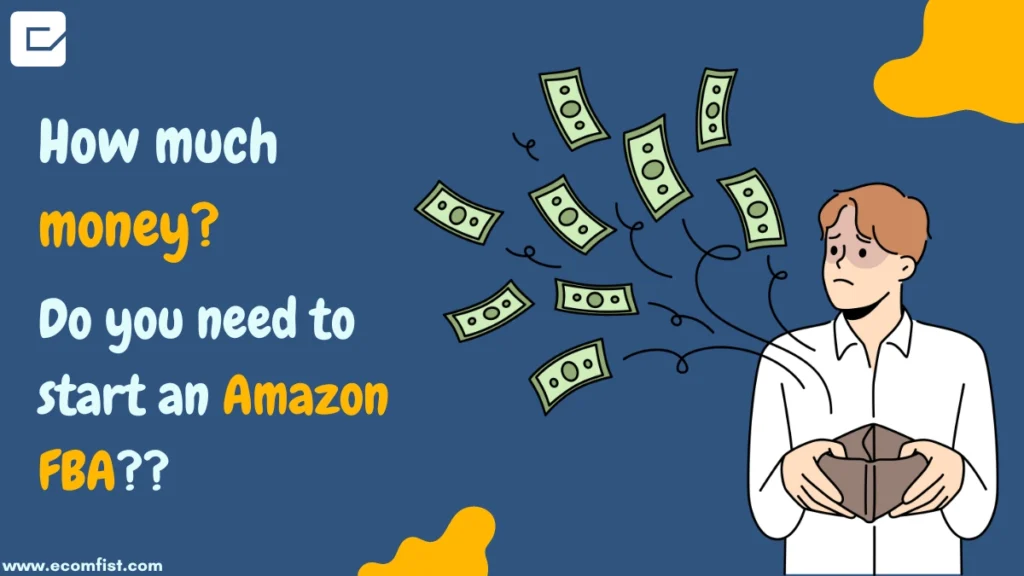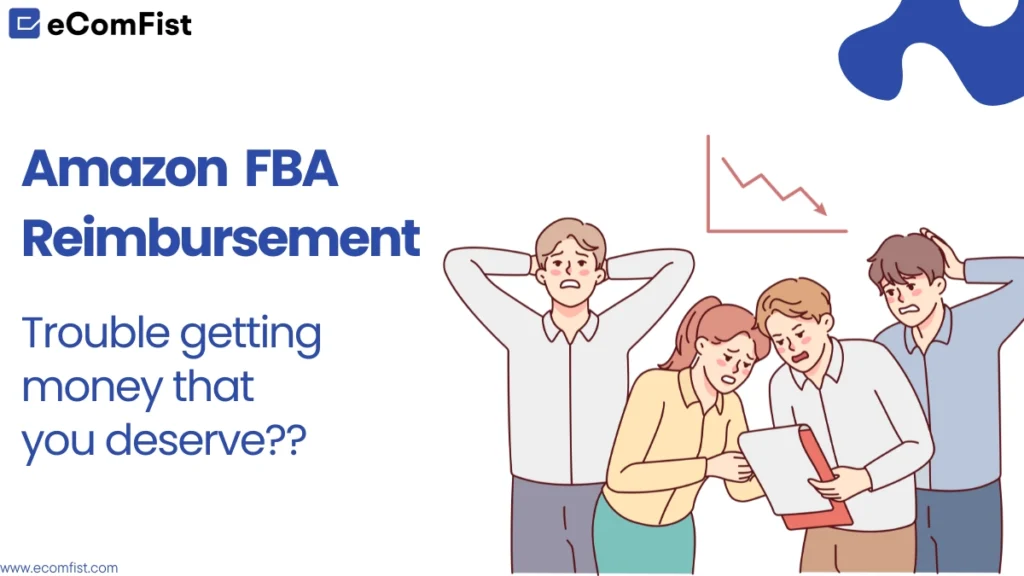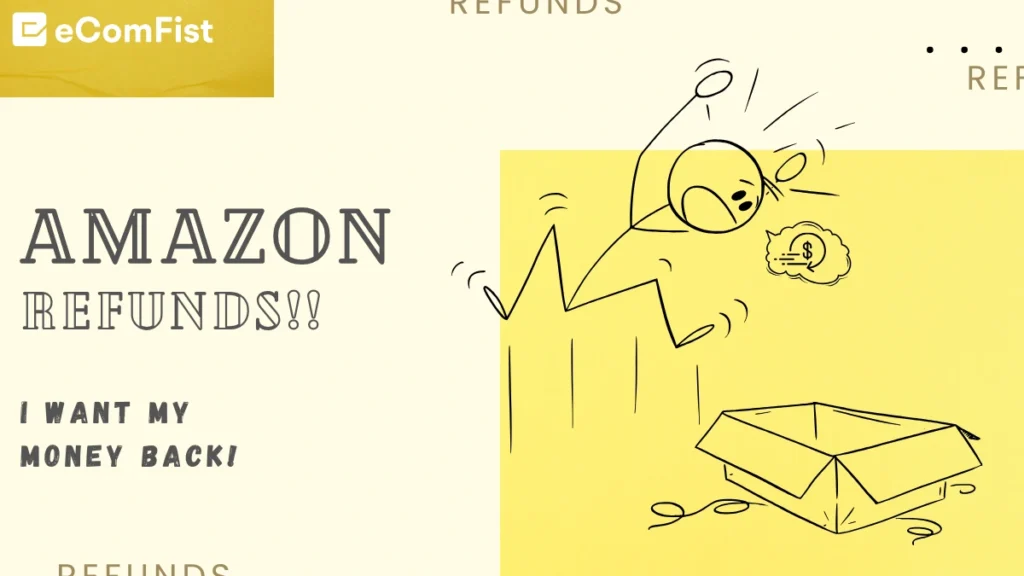It’s likely that most of us have heard at least one of the many motivating success stories among Amazon sellers. Keep in mind, though, that not everyone who tried selling online was successful. After the first and second years, a lot of sellers on Amazon give up. So, the important question here is, “Why do sellers quit Amazon FBA?”
Let’s discuss the issues that most frequently discourage Amazon sellers, how to solve them, and what beginners may do to avoid making the same mistakes. Learning from others’ mistakes paves the path for future success. So let’s get started!
Top reasons Amazon sellers quit
Making money through Amazon’s marketplace isn’t always a stroll in the park. Sometimes it just isn’t possible to get past difficulties. When starting a business, knowing the time, money, and effort involved will help you avoid the key pitfalls that prompt sellers to give up.
Here comes the fantastic news! eComFist offers helpful guides for addressing typical issues. Our team of expert sellers keeps a close eye on Amazon at all times to address any customer issues that may arise. Let’s analyze the reasons that caused many to temporarily put their intentions to sell on hold.
1-Amazon advertising is really expensive
Certainly! When Amazon advertising costs go up, some sellers quit Amazon FBA because they worry their profits will suffer. Let’s have a look at a sample to better understand the cost dynamic and the potential issues involved.
Revenue and Profit Dynamics
Sellers can increase product exposure and revenue by placing ads on Amazon. However, the cost of advertising on the platform can increase if the seller is bidding on competitive keywords. If advertising expenses are cutting into profit margins, that’s a big problem.
When it comes to marketing, not all sellers can turn a profit. If marketing costs exceed sales income, marginal profit and long-term survival are both jeopardized.
Let’s take an example
A business owner decides to advertise their products on Amazon and plunks down $500. The advertisement generates an extra $1,000 in sales, or 10%, for the business. The additional $300 in sales generates $300 in profit after deducting the cost of items, Amazon fees, and delivery costs.
When subtracting advertising expenses of $500 from net income of $300, the profit margin is -$200. If this tendency persists or worsens, with advertising costs consistently outpacing earnings, the seller can find it impossible to sustain the business.
Ways to avoid losing money on advertisements
Amazon sellers may tackle this issue using a variety of strategies, such as zeroing in on the most productive keywords, refining the most productive targeting criteria, and monitoring ad performance closely. Because of the dynamic nature of the advertising industry, it is essential to conduct extensive market research to identify profitable keywords and stay abreast of emerging marketing trends.
You can find more strategies in the blogs below:
- 07 most profitable Amazon PPC campaign secrets you should know at all cost
- Amazon sponsored brand ads: 05 must see 2023 trends you can’t miss
- Top sponsored product ad placement hacks for 2023
And you can find free consultations regarding your PPC via our Amazon advertising service.
2-Selling on Amazon FBA is too complicated and confusing
Many sellers are quitting Amazon FBA as the platform becomes more difficult to navigate.
Why? But now that everyone and their mother is selling something on Amazon, competition is fiercer than ever. And as the number of sellers on Amazon grows, Amazon is bound to tweak its policies. Problems arise when doing so, such as technical difficulties, suspension of accounts, and encounters with counterfeit products from other sellers.
This is how the competition on Amazon FBA is growing year by year.
A survey showed that 30% of sellers gave up using Amazon FBA because of the stress involved.
In what way is it too much? Because it can be difficult for beginners in the world of online selling to make sense of all the information available on sourcing products, listing them, managing inventory, and advertising their business.
But here’s the thing: mastering the method isn’t enough. The key to keeping your Amazon business safe is understanding how to handle any issues that arise.
Many would-be sellers avoid getting involved because they feel it will be too difficult to succeed. The good news is that you can make it much easier if you have the correct information, support, and tools.
Easy-to-understand training and useful materials can make a significant difference in whether or not a seller succeeds on Amazon FBA.
So, while it may appear daunting at first, with our proper guidance, it can become much more manageable.
3-I don’t know how to differentiate my product in competitive marketplace
This is the main reason why sellers quit Amazon FBA. Because of this, why is it so challenging for Amazon sellers to get their products noticed? Well, it’s not easy to make your product different.
Let’s say you’ve come up with a really great new phone case that you’d like to sell. There are currently a million phone cases on Amazon. What makes yours unique, then? Therein lies the challenge.
Some sellers pick products with limited room for customization, and that’s a large part of the problem.
You’ll have a hard time setting yourself apart from the competition if you sell the same phone case that everyone else does. If the product doesn’t allow for much personalization, you may be out of luck if you want to give it a distinctive look or implement additional functions.
Consequently, it is difficult for sellers to differentiate their products from the competition if they make a decision that is either too generic or too rigid.
It’s like attending a gathering where everyone is dressed identically. If you dress like everyone else, it will be difficult to attract attention.
The good news is that sellers have a better opportunity to create really one-of-a-kind products by focusing on things that lend themselves to greater customization and innovation.
Therefore, making a good decision from the start is crucial. Items that allow you to put your own unique spin on them will sell better on Amazon. Otherwise, the wrong selection of the product will cost you a fortune. Even for such products, costly Amazon advertising won’t seem effective.
For deeper information on how to differentiate your product, read the blogs below:
- Most popular Amazon items to sell for substantial profit
- How to differentiate your product on Amazon – Your best guide
4-I couldn’t afford the business expense
This is the biggest challenge for every new seller. Let’s get to the bottom of why Amazon FBA sellers make such rookie financial moves.
Understand the Amazon Fee structure
When sellers don’t understand the Amazon fee system, their wallets suffer. This is also the main reason why sellers quit Amazon FBA. Sellers often experience unforeseen financial losses due to their ignorance of Amazon’s fee structure.
Take the case of a seller who sets the price of their products at $10, expecting a 100% profit. However, Amazon does impose fees for using its platform, and a seller may end up with less earnings than expected if they aren’t prepared.
It’s similar to attending an event without knowing there’s an entrance fee. You may find that some of the funds you set aside for fun end up being used to address unexpected expenses.
Why is it so important to understand Amazon’s pricing structure?
Understanding the charge structure is crucial for successfully managing the financial side of an Amazon business. It actually maintains your cash flow. Amazon has a complex fee structure that includes various charges (fulfillment cost, advertisement cost, etc.) and commissions, and without a clear understanding of these fees, the cash flow of your private label business may suffer a lot.
So, when sellers have a firm grip on this information, they are better equipped to plot out strategies, determine fair costs, and steer clear of financial challenges.
It’s not enough to only make a profit from product sales; careful budgeting is also required to prevent sellers from losing sight of their bottom line due to excessive fees. So, it’s better to calculate every financial game so that you may avoid unpleasant surprises.
I’m unable to buy new Inventory management system
When sellers stopped because of money, 68% said it was because they couldn’t afford to buy new inventory. There are a few potential causes for this.
Ineffective inventory management, betting on a product that didn’t perform as predicted, and failing to reinvest revenues back into the business are all potential causes.
It’s fine if your product did not do as well as you had hoped, either financially or in terms of sales. Most Amazon sellers experience this problem at some point. Take this opportunity to improve your next release.
It takes sometime to develop a solid reputation of your product
It takes time to build a trustworthy reputation on Amazon. Time is of the essence. Just like planting a tree, this process requires patience and time to bear fruit.
That’s why you should focus on making your customers happy, applying new strategies, experiencing failure and learning from it, starting small, and delivering excellent items.
Creating a reliable Amazon seller profile is like building Rome; it takes time. Because the authenticity of your Amazon profile is built on the customers’ reviews, and customers usually forget to give reviews. So, receiving feedback takes time.
As people talk about you, your reputation grows. To succeed, take things slowly but surely.
Don’t give up if at first you don’t succeed; a good history of interaction builds trust with buyers.
Amazon appreciates consistent performance, so do your best to meet or exceed customer expectations.
Your perseverance will be rewarded; eventually, you’ll earn a favorable reputation that brings in clients. No matter what the issue is, you can count on us for free advice and guidance.
So, is it too late to start Amazon FBA in 2024?
When people ask me if it’s worth it to join Amazon FBA now, I always respond that it is, but that they need to take it seriously.
After all, the modern Amazon market is intensely competitive, and with the platform’s tougher restrictions, it’s harder than ever for sellers to make a go of things.
So, before deciding to compete with Amazon, you should evaluate your strengths, such as your financial resources, operational expertise, and other competitive advantages.
Learn the logic behind Amazon’s platform. This is the only way to stay away from traps that could cost you money.
The Amazon marketplace has undergone significant changes recently. Once upon a time, $3000 was all you needed to launch a successful product onto the market. It’s important to develop and use a sound logical framework for your thoughts.
Determine a certain niche or market, and then pick a product to market and sell. Make this product successful in a practical way in order to build up the listing’s historical weight and sales history on Amazon.
The next step is to use this line of reasoning to sell products. A product’s sales and profits can be steady every day. If you can pull this off, you will have already achieved major success on Amazon.
Which first thing should you buy? I recommend conducting additional market research, determining which product is most in demand, and integrating this information with data from third-party tools such as Jungle Scout, AMZscout, or 4Seller.
In general, Amazon FBA demands that you put in a lot of effort to achieve it; as long as you are patient, you will be successful.
Contact us for a free consultation.











